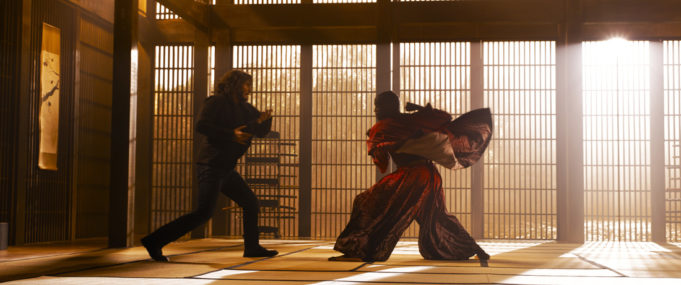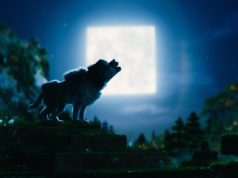“Nothing comforts anxiety like fake nostalgia,” says one of the characters in The Matrix Resurrections. Yeah, they said that to me as I watched that movie in the same auditorium where I saw its predecessor 18 years ago. That line is crap, by the way — I get tons of fake nostalgia from the movies every week, and it only makes me more anxious. However, it did make me remember what drew us to this series way back when: the Asian martial arts, the high technology, the simulated world laid out on a map of Chicago, the Western audiences’ first exposure to Hong Kong-style wire-fu, the casting of actors of color at a time when Hollywood was leery of doing so in a big science-fiction movie, the catsuits and trench coats all combined to make something new. Sadly, Lana and Lilly Wachowski (who were then known as Larry and Andy) went up their own asses before the trilogy was even done, and Hollywood largely moved on from their brand of action influenced by William Gibson and Jean Baudrillard. Even sadder, the long-gestating fourth installment proves that Lana, helming this without her sister, hasn’t moved on from it.
The story picks up in the present day, as Thomas Anderson (Keanu Reeves) is a video-game designer who achieved superstar status with his trilogy of games about the Matrix back in 1999. He maintains a hopeless crush on another regular customer at his habitual internet cafe (Carrie-Anne Moss), who doesn’t know that she inspired the heroine of his games. His CEO (Jonathan Groff) informs him that their parent company, Warner Bros., is forcing them to make a sequel, something Thomas vowed he would never do. That’s when characters he coded into the Matrix start turning up in his life, telling him that he must come with them to the world outside. Despite his psychoanalyst (Neil Patrick Harris) warning him that he’s experiencing psychotic delusions, Thomas becomes Neo once again and teams up with a group of rebels to rescue Trinity from the pod where the machines imprisoned her.
This, unfortunately, means that the movie has to spend much of its time in the remains of Zion, the rubble-strewn dystopia where humans are rebelling against the machines and where Jada Pinkett Smith (made up to look decades older) is in charge. Why the Wachowskis have always found this place more interesting than the cool-looking Matrix is something I’ll never understand. It’s the site of so much clotted dialogue as Lana Wachowski and her co-writers use terms that you need a computer science degree to understand to explain the mechanics of why everyone is doing everything they’re doing. That comes at the expense of the action sequences, which the siblings never seemed to realize was what kept movie fans coming back. There is one good fight sequence in a grimy public restroom, with Reeves and Groff bashing each other against the sinks and urinals. Everything else is ruined by uninventive choreography and direction that’s lacking the Wachowskis’ energy of old.
The sole bit of comedy comes from Reeves when Thomas tries to convince himself that the cyber-rebels he’s meeting are only in his head. As the newly updated version of Morpheus, Yahya Abdul-Mateen II brings an old-school cool to the part that Laurence Fishburne didn’t. However, the rebels working with him are a pallid bunch, and the romantic plot between Reeves and Moss was never good enough to carry the series. The video-game programmers working for Thomas are supposed to stand in for fans of the films, with their theories about what the Matrix represents, and the filmmakers don’t have the wit to pull that off. Inception tackled the idea of playing around in a constructed world with better results, and Free Guy went down so much more easily because its makers had no pretensions to great art. These days, we’re surrounded by old franchises rebooting and retooling themselves in search of fresh angles. In this environment, The Matrix Resurrections feels about as novel as a Furby.
The Matrix Resurrections
Starring Keanu Reeves and Carrie-Anne Moss. Directed by Lana Wachowski. Written by Lana Wachowski, David Mitchell, and Aleksandar Hemon. Rated R.













It is now more imperative than ever that a time machine be invented so that mankind can go back and prevent the best sci-fi trilogy in history from being ruined by this garbage.